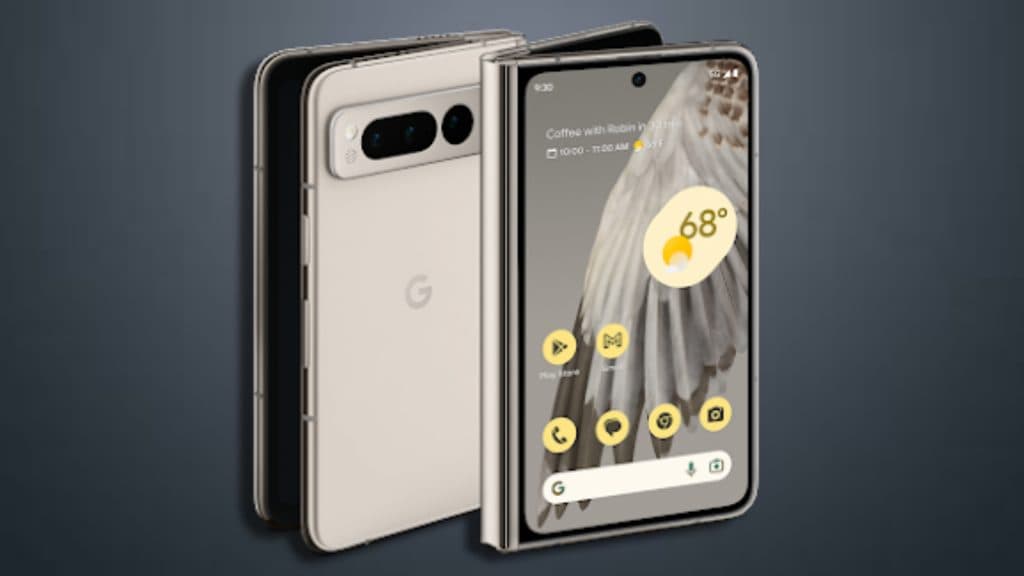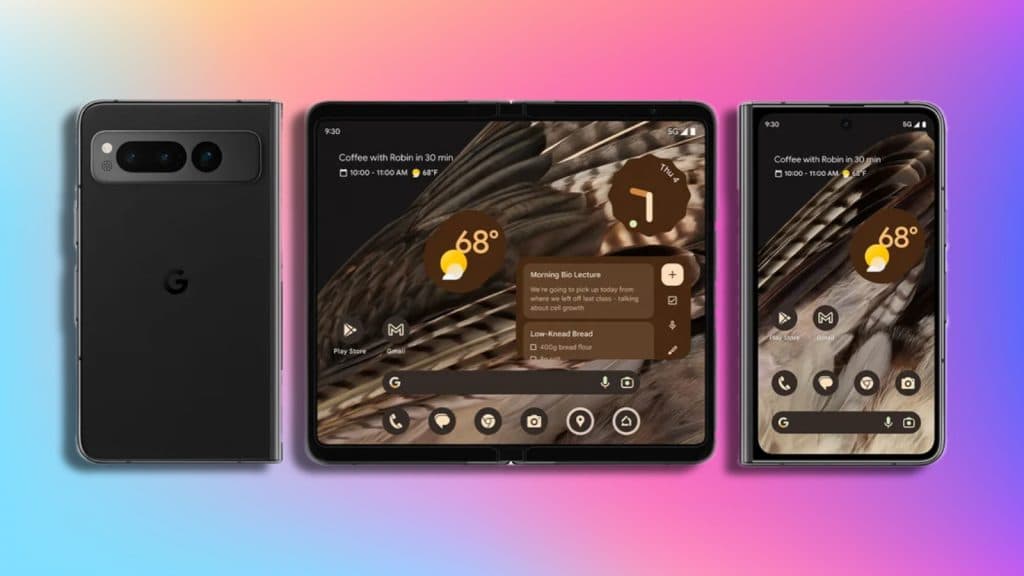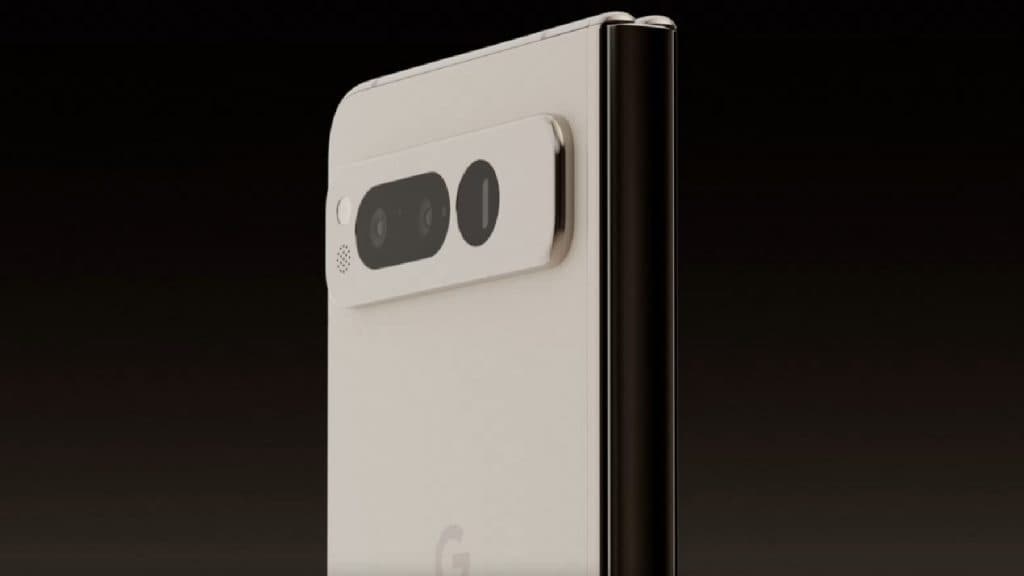Where to buy Google Pixel Fold: Price, specs & release date
Want to buy the Google Pixel Fold? We’ve gathered everything you need to know, including release date, specifications, price, deals, and more.
Google has officially announced its first foldable phone, the Pixel Fold. It was announced alongside the affordable Pixel 7a smartphone.
With the launch of Pixel Fold, Google becomes the only second smartphone maker after Samsung to have a foldable phone available in regions like North America, Europe, and Asia. While Oppo released its new clamshell foldable phone in Europe earlier this year, the company plans to cease operations in the area.
The Pixel Fold is Google’s attempt to make foldable phones go mainstream. Though the Pixel Fold doesn’t fall under the “affordable” price category. The foldable segment is still nascent, and the prices will eventually decrease as more people get their hands on these new devices.
Content
- Where to buy Pixel Fold
- Pixel Fold price
- Pixel Fold release date
- Pixel Fold: specification and design
- Google Pixel Fold Vs. Galaxy Fold 4
Where to buy the Google Pixel Fold: Best deals
The Pixel Fold is up for pre-order, and the phone can only be ordered via the Google Store. The device is expected to start shipping on June 27.
Google is bundling a free Pixel Watch to people who pre-order the phone, making it an incredible deal. For those unaware, the price of the Pixel Watch starts at $299.
Pixel Fold price
The price of Google Pixel Fold starts at $1799. The tech underneath it is complex than the average smartphone so the Pixel Fold isn’t cheap. The phone comes in two storage and memory combinations. The retail pricing of Pixel Fold is as follows:
- 256GB – $1799
- 512GB – $1919
Pixel Fold release date
The Pixel Fold was announced on May 10, 2023. It will be initially available in the US. Google will also bring the Fold to Germany, Japan, and the UK at a later date. There is no clarity if the Pixel Fold will also be introduced to other regions.
The phone will begin shipping on June 27. However, as with the case with products announced last year, it’s possible that some might receive their phones early.
Pixel Fold: specification and design
 Google
Google- External Display Resolution: FHD+
- External Display Size: 5.8-inch with 17.4:9 aspect ratio
- External Display technology: OLED
- External Display Refresh Rate: 120Hz
- Inner display Resolution: 2092×1080
- Inner Display Size: 7.6 inches
- Inner Display technology: OLED
- Inner Display Refresh Rate: 120Hz
- SOC: Tensor G2
- RAM: 12GB
- Storage: 256GB / 512GB
- Cameras: 3x 48MP +10.8 MP Ultra-Wide + 10.8 MP telephoto
- External selfie camera: 9.5 MP
- Inner selfie camera: 8MP
- Features: Wireless charging & side-mounted fingerprint sensor
The Pixel Fold can be seen as a necessary evil for Google. While the company might not expect this first-generation device to sell a million units, it was still important to introduce a product that could lead other brands to follow suit.
Since an unknown company, Royole, introduced the first foldable phone, only a scant few brands have dared to break the form-factor barrier. A few Chinese smartphone makers did try their hands at foldable phones, but most of them have been limited to mainland China.
Google hopes the Pixel Fold could lead the way and encourage more brands to use the new Android operating systems that are designed for large-screens and foldable devices.
Pixel Fold design and display
 Google
GoogleThe Pixel Fold isn’t as taller as the Galaxy Fold 4 and has a 5.8-inch external display. This design choice makes the external display more useful compared to the tall and narrow display of Galaxy Fold 4. The front display on the Pixel Fold supports a 120 Hz refresh rate and is an OLED panel equipped with Gorilla Glass Victus for protection.
The inner display measures 7.6 inches diagonally and has a squarish 6:5 aspect ratio. Even the inner display supports a 120 Hz refresh rate; it is made of ultra-thin glass with a protective plastic layer on top.
The inner display has visible bezels, and the inner selfie camera is housed under the top bezel, unlike the Galaxy Fold 4, which has a skinny bezel and an under-display selfie camera. If you prefer using light-colored wallpapers, you will surely notice the thick bezels on the top and bottom of the display.
The rear panel houses a triple camera setup though the rectangular camera module doesn’t stretch like the Visor on the other Pixel phones. The phone is available in Porcelain and Obsidian colorways.
Google Pixel Fold camera
 Google
GoogleThe Pixel Fold has a triple camera setup at the back. This module includes an OIS-enabled 48 MP ½ inch primary sensor, a 10.8 MP ultrawide, and a 10.8 MP sensor with 5x optical zoom and support for Super Res Zoom up to 20x.
The front-facing selfie camera is a 9.5 MP sensor, while the one on the inner display is an 8MP sensor. Thanks to the computational photography prowess of the Tensor G2 chipset, the Pixel Fold could easily outdo the Galaxy Fold 4’s camera. However, we will have to wait for real-world comparisons.
Google Pixel Fold specifications
The Pixel Fold has a Google Tensor G2 chipset at its core, along with the Titan M2 security chip. The Pixel Fold has 12GB of LPDDR5 RAM and 256 or 512GB of UFS 3.1 storage.
Other key specifications of the Pixel Fold include a fingerprint sensor embedded under the power button, stereo speakers, and dual SIM support with one eSim. The phone runs on a 4821 mAh battery with support for 30W fast charging.
Google Pixel Fold Vs. Galaxy Fold 4
The Galaxy Fold 4 was released almost half a year back and is still one of the few prominently available foldable phones globally. While the Galaxy Fold 4 is already in its fourth generation, the Pixel Fold is Google’s first-ever and only second foldable phone from a notable non-Chinese smartphone brand.
Regarding camera performance, the Pixel Fold outperforms its rival, and Google’s phone will reportedly also use a better display. As for the raw power for the chipset, comparisons show that the Snapdragon 8 Gen 1 outscores the Tensor G2 in most departments. However, Tensor G2 shines with its superior GPU performance, and a dedicated Titan M2 coprocessor which offers hardware-level security.
The Pixel Fold will run on near-stock Android compared to Samsung’s heavily customized OneUI; the Pixel will get faster software updates.
Ultimately, it all boils down to the preference for display, software optimizations and camera performance. The Pixel Fold should be your preferred device if you need a foldable phone with a fantastic camera and fast OS updates. However, if you want a bigger display, wireless charging, and intuitive software tweaks, you should choose the Galaxy Fold 4.
Be sure to check out our other guides
Google Pixel 7a: Where to buy | Where to buy the Asus ROG Phone 7 Ultimate & Phone 7: Price, release date & more | How to make mac dark mode | How to show hidden files on Mac | How to check airpods battery level | Silence notifications on iPhone | How to turn iPhone off | How to share location on iPhone | How to delete contacts on iPhone | How to make folders on iPhone